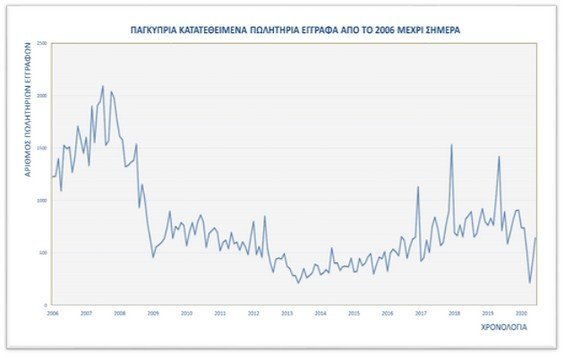
Understanding the real estate market makes you a more empowered buyer or seller.
This primer explains five fundamental factors that affect the market and how they impact your buying and selling power. They include:
If you’re a buyer, understanding these factors can help you determine your negotiating and purchasing power.
If you’re a seller, they can help you price your home and anticipate your number of offers and selling timeline.
Supply and demand create buyer’s and seller’s markets
A neighborhood may contain many homes, but only a small portion is normally for sale at any one time. The supply of for-sale homes relative to the demand to buy them determines whether the market favors buyers or sellers.
When a lot of homes are for sale, but not many people want to buy them, it’s a good time to be a buyer. This is known as a buyer’s market.
Conversely, when not many homes are for sale, but a lot of people want to buy them, it’s a good time to be a seller. This is known as a seller’s market.
Buying in a buyer’s market means you have a lot of power. You may get a lower price and a closing date that works well for you. The seller might pay some of your closing costs or wait to close until you sell your current home.
Buying in a seller’s market can be difficult. The seller may receive multiple offers. If a home is highly desirable, a bidding war could drive up the price. You may have to agree to whatever terms the seller wants, even if they’re costly or inconvenient for you.
Selling in a seller’s market means you have a lot of power. You might get several offers for more than your asking price. You’ll often be able to dictate the terms you prefer. You may not have to fix up your home to sell it.
Selling in a buyer’s market can be challenging. You might not get the price you want, or the price your neighbor got a few months ago for a home that’s similar to yours. You might have to make a lot of repairs and improvements to your home to find a buyer for it.
→ Want to have the certainty of receiving a competitive offer and move on your own timeline? Request a free, no obligation offer from Opendoor.
| Supply of for-sale homes | Demand to purchase a home | Type of market |
| High | Low | Buyer’s |
| Low | High | Seller’s |
The National Association of Realtors (NAR), a trade organization for realty brokers, is a good resource for housing market data. The association tracks the volume of closed and pending sales of existing homes in major metropolitan areas. Data and analyses are published monthly, and the association’s economists usually include helpful insights into current supply and demand conditions in the nation’s housing markets.
Many local Realtor associations and multiple-listing services (MLS) also publish local housing market data and analyses that can help you understand market dynamics.
Median home prices hint at housing market’s direction
Median home prices, also noted by the NAR, can be a useful indicator of the direction of real estate markets, but this data must be analyzed with caution.
The median price is “in the middle” on a list of prices of sold homes. This means exactly half of the homes listed are above this price and exactly half are below.
While it may be tempting to track monthly or quarterly median prices trends, the only valid comparison is with the same time period a year earlier, according to NAR. That’s because sales and prices are affected by seasonality. Prices in December, when most housing markets are slow, aren’t comparable to prices in July, when markets are closing sales from the spring home-buying season.

Most housing markets are segmented by price bands. An entry-level condominium or small house isn’t comparable to a larger home or mansion. In some markets, high-priced homes are segmented into two markets: million-dollar and multimillion-dollar.
These submarkets are important because median prices can be skewed by changes in the mix of homes sold. If an unusually large number of luxury homes sold in a specific area during a certain time frame, the median price might spike even if the overall level of prices was flat. Conversely, an unusually large volume of sales of lower-priced homes can cause the opposite effect.
Still, median prices can show the general direction, up or down, of housing market prices over time. This information can be helpful for buyers and sellers.
→ Want to know median home prices in your area? See local real estate trends.
Buying when prices are rising can be frustrating. One challenge is that prices of recently sold comparable homes might not be a good indicator of current home values due to the rapid pace of home price appreciation. In a hot market, buyers will experience a lot of competition and will most likely need to make a bid above the asking price.
Falling prices enhance buyer purchasing power. You might be able to buy a larger or nicer home, or one in a more desirable location, for less than you would previously have paid.
Selling when prices are rising can be wonderful. You may be able to list for higher, or receive higher offers, than you expected.
Selling when prices are falling can be challenging. You’ll have to settle for less and price your home lower than the comparable sales data to avoid what’s often referred to as chasing the market down, with multiple price reductions as prices fall further.
| Median home price | Impact for the buyer | Impact for the seller |
| Increasing | Challenging, bids will most likely exceed asking price | Good, can expect offers above asking price |
| Decreasing | Good, more buying power | Challenging, settle for lower sale price |
NAR releases median price data quarterly for detached houses in approximately 175 metropolitan areas. Local Realtor associations and multiple listing services also release this type of data. The economists’ analyses and footnotes can contain important information about the statistics and what they mean.
In some cases, national and local data can vary dramatically due to differences in data collection methodologies. NAR advises its members that local data may be more relevant than national numbers.
New construction expands supply
Existing homes aren’t the only source of supply of homes for sale. Homes also come on the market when they’re offered by new-home builders.
Newly built homes typically cost more than comparable resale homes. That premium exists because new homes:
- Comply with current building codes for safety and structural soundness.
- Require less maintenance in the near term.
- Are usually more energy-efficient than older homes.
The National Association of Home Builders (NAHB) and U.S. Census Bureau are good resources for information about new-home permits and starts.
A permit grants the builder permission from the local government to begin construction. A start occurs when the builder breaks ground to construct a new home. Permits and starts are good indicators of future new housing supply.
Low mortgage rates spur demand
Mortgage rates impact housing markets indirectly because interest rates are a key factor in the demand to purchase homes.
When rates are rising, financing a home purchase becomes more expensive, dampening the demand to buy. The opposite effect occurs when rates are dropping. As financing becomes cheaper, more people decide to buy a home rather than rent.
Many people believe the Federal Reserve sets mortgage interest rates. It doesn’t do so directly, however, there is a connection.
The Mortgage Reports explains that the Fed controls the federal funds rate, a short-term rate that banks use to make loans among themselves. This rate and the Fed’s commentaries about the economy indirectly influence the overall level of market rates, including those for home loans.
The mortgage rates individual home buyers and homeowners pay are set by banks, credit unions, mortgage companies and other lenders.
Strong economy, wage growth, more buyers
Broader economic factors like employment, job creation, household formation and wage growth also affect the demand to buy homes.
When new jobs are created and companies offer employees higher pay, people feel economically more secure and better able to purchase a home. A strong local economy can be a positive factor for a strong local housing market with healthy demand and rising prices.
On the other hand, “when the economy is sluggish, so is real estate,” as Investopia says. Job losses and declining wages tend to depress the demand to buy a home. Tax incentives or lower mortgage interest rates can help to offset the effects of a weak economy.
Newspapers, government agencies and local chambers of commerce can be good resources for national and local economic data.
Final takeaway
Understanding these housing market fundamentals empowers both buyers and sellers to make smarter decisions about buying or selling a home.
Remacy is not a financial, tax, legal, insurance, or investment advisor, and this article is meant for informational purposes only. Remakcy always encourages you to reach out to an advisor regarding your own situation.
Understanding the fundamentals of the real estate market
https://www.opendoor.com/w/blog/understanding-fundamentals-of-real-estate-market



